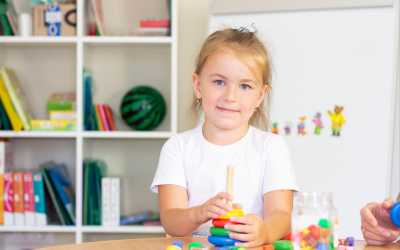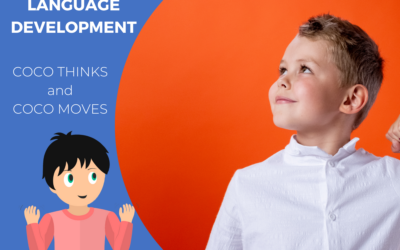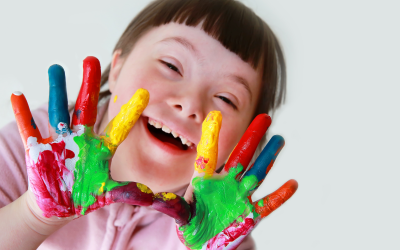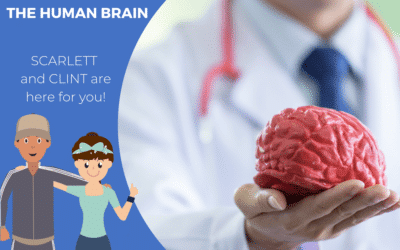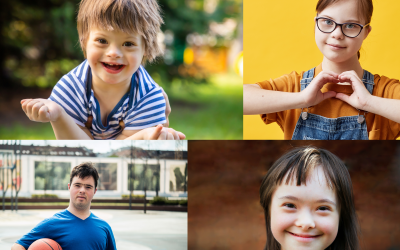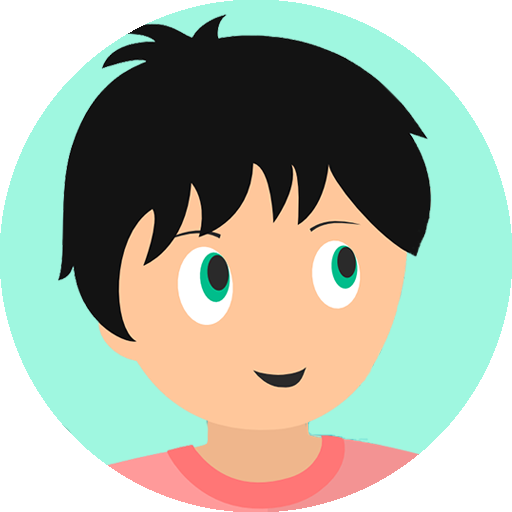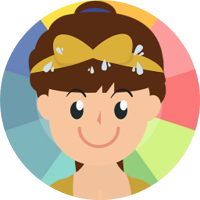Speech therapy sessions
The aim may be to work on articulation in the mouth, on breathing, on vocal intonation or on cognitive functions such as attention or memory. The aim may be to work on articulation in the mouth, on breathing, on vocal intonation or on cognitive functions such as attention or memory. The session can be divided into several parts to work on different aspects and integrate the different strategies.
To achieve this, the speech therapist can do free-body activities (breathing exercises, massage), activities with objects (cards, toys, instruments) or use applications (the COCO THINKS and COCO MOVES app).
COCO THINKS and COCO MOVES,
the educational and physical app
COCO THINKS and COCO MOVES is an educational and physical app for children from 5 to 10 years old. In this app, you can find more than 30 educational games to work on all cognitive functions. This application can be used directly by the speech therapist during the sessions or at home between sessions.
The games are varied so the child can improve his memory, attention, logic and language. With 3 levels of difficulty, the games can be adapted to the child’s needs.
In the next few paragraphs, you will see examples of games on a tablet, depending on the disorder presented.
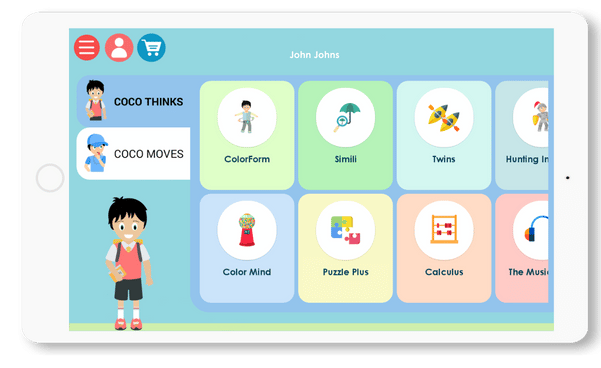
After 15 minutes of activity, the COCO THINKS and COCO MOVES app stops to offer a sports break. This allows the child to get away from the screen, to air the brain and to better process the information and strategies acquired.
Alternating educational and physical activities is very important for children to keep them motivated throughout the session.
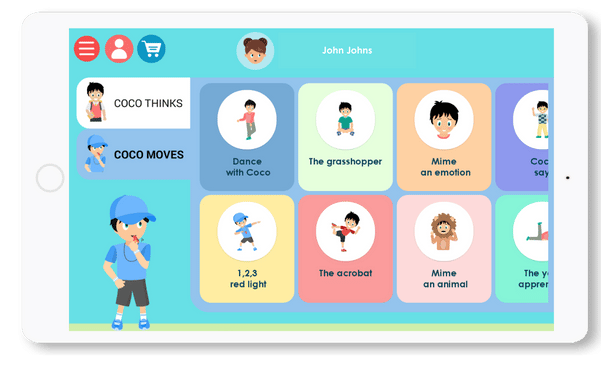
Practical exercises – written language disorders
When we talk about written language, we are talking about writing and reading.
For reading, the SLT can prepare games with letters, syllables or words depending on the child’s level and age. He or she can create a syllable or rhyme memory. In this case, the child has to name the pictures on the cards (where to read the name written on them?) and create pairs with words that rhyme (e.g. “cake” and “boat”).
Playing with letter sounds and syllable combinations is very important for reading.
Syllabus
In this game, the child has to find words from the syllables on the screen. The child must try several combinations and imagine the possible words to do the exercise. Depending on the level of difficulty chosen, the child must start from the word and find the syllables that make it up, or start from the syllables to find words.

To work on more complex reading, the speech and language therapist can create a story, cut it into sequences and ask the child to read the texts and put the story in the right order. In this case, not only reading is worked on, but also sequencing and logic.
With regard to writing, the difficulty may be due to dysorthographia (confusion between letters) or dysgraphia (difficulty in the graphic gesture).
For dysorthographia, the work will focus on sounds and their combinations to associate a phoneme with its grapheme. For dysgraphia, we will work more on the motor gesture and the movement of the pen. We can create a path and move a ball in it by moving it with the pen. Or we can draw coloured bubbles on a piece of paper and ask the child to link the bubbles of the same color. The aim is to help the child learn to manage and adapt the movement of the pen.
Practical exercises – oral language disorders
Oral language disorders are very varied and can have different causes.
Generally, the speech and language therapist will work on the child’s posture and breathing. Learning to have good posture allows for better breathing and therefore better control of sound production.
The acrobat
In COCO MOVES, you can find a balancing game where the child has to mimic the positions on the screen.
The child has to learn about his or her body and adapt his or her posture.
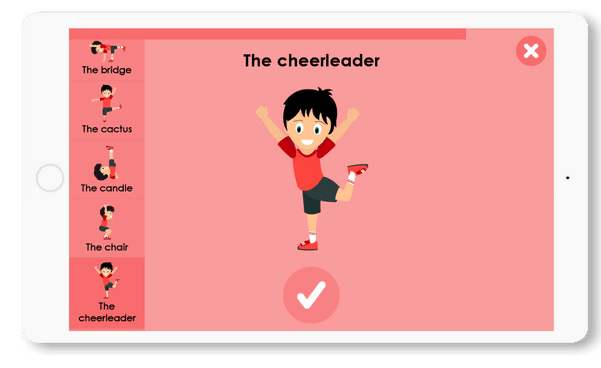
For breathing, the SLT can create a pathway and the child has to blow on a small ball to make it go through the pathway. Or they can put a pen on the table, one on each side of the table, and blow on it to make it fall on the other person’s side.
Oral language disorders may be related to poor articulation. In this case, the speech therapist will do exercises to strengthen the oral and facial muscles. The speech therapist may massage the lips, tongue or cheeks. The speech therapist may also put the child in front of a mirror and make faces. To improve the sound of the child’s voice, the speech and language therapist may provide singing activities or exercises where the child has to vary the vocal intonations (e.g. telling a story in the voices of the characters).
To improve speech and sentence structure, the SLT may ask the child to make up stories or describe pictures. For example, the SLT may give the child a card with a picture on it and ask the child to describe the picture to get the SLT to guess the picture. The same game can be done in reverse, so the child has to guess the hidden picture. This last version is used in cases of aphasia.
Puzzle Plus
In this game, the child has to solve a puzzle. You can ask the child to describe all the pieces of the puzzle or the final picture. You can also ask them to make up a story based on the picture.

Practical exercises – learning disabilities
Learning disabilities influence reading, writing, oral language and mathematical skills. The speech and language therapist can therefore use the games presented in the previous paragraphs.
In the case of learning disabilities, the speech and language therapist can work on word meaning and sentence structure. They can play classification games, for example, putting all the fruit on one side of the table and all the vegetables on the other side. Or say a sentence and show 4 pictures to the child who has to guess which picture corresponds to the sentence. In this case the sentence could be “the mother is giving her child an ice cream” and the pictures are: a mother giving a child an ice cream, a mother giving her child a drink, a child giving her mother an ice cream, a mother giving her husband an ice cream.
Brain Storm
In this game, the child has to put the words in the right order to create a sentence. The child has to look at and understand all the words to make sense of the sentence.
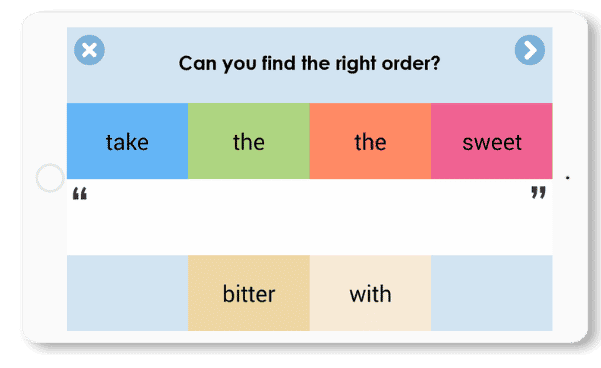
For dyscalculia, the SLT can work on numerical order through counting activities, for example putting 5 marbles of each color in a glass. The SLT can also create activities to improve the child’s ability to recognize a quantity visually (e.g. if I see 5 cars, I can say directly that there are 5 without having to count them one by one).
This exercise can be done with objects or animals to make it fun. You can also use a variant where you use the fingers of the hand, so you show 3 fingers and the child has to recognise directly that they are 3 without counting them. This version is useful to help children learn to count on their fingers (counting on the fingers is a very common strategy for dyscalculia).
Calculus
In this game the child has to solve mathematical operations. Depending on the level, you can find addends and substrates or multiplications and divisions.
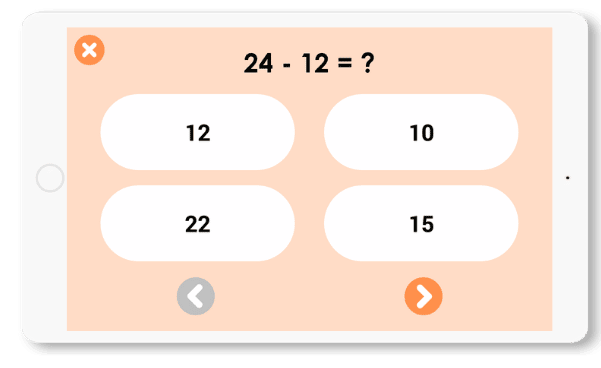
Practical exercises – swallowing disorders
The swallowing disorder may be related to a neurological disease or as a result of trauma. It can also be found in adults, for example following a stroke.
To improve swallowing, the speech and language therapist will do posture and breathing exercises, as well as oral-facial muscle strengthening activities, which have already been introduced.
The SLT may also ask to bring food back to the session to watch the child’s behavior during swallowing and help them find compensation strategies.
Practical exercises – hearing impairment
In hearing impairment, the work of the speech and language therapist changes depending on the person’s ability to recover or improve hearing function.
The SLT can do activities to improve auditory discrimination. For example, they can take musical instruments, ask the child to close their eyes and recognise the instrument that the SLT is going to sound. Or they can use picture cards and ask the child to imitate the sounds of the animal or object on the card and the SLT has to guess, or vice versa.
Musical ear
In this game, the child has to listen to sounds from everyday life, animal sounds or musical instruments and recognize them. This game helps to work on auditory discrimination.
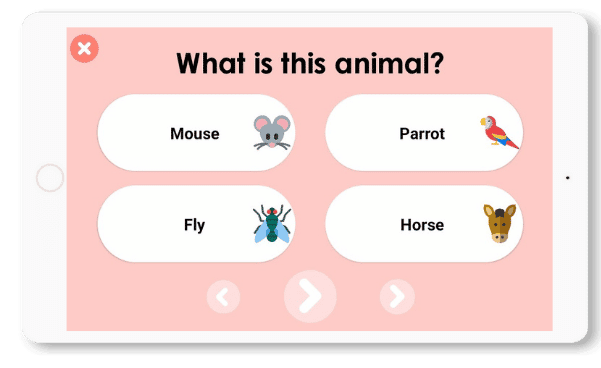
DISCOVER OUR SUBSCRIPTIONS
1 MONTH
- Performance Tracking
- Monthly updates
- Customer support
- No automatic renewal
$4,99 USD
3 MONTHS
- Performance Tracking
- Monthly updates
- Customer support
- No automatic renewal
$18 USD
1 YEAR COCO
- Performance Tracking
- Monthly updates
- Customer support
- No automatic renewal
$44 USD
Other articles you might be interested in:
Supporting children with autism
Dynseo proposesSUPPORTING CHILDREN WITH AUTISM with COCO THINKS AND COCO MOVESDynseo and its team are very much...
Supporting DYS children with COCO THINKS and COCO MOVES
Dynseo proposesDYS disorders with COCO THINKS and COCO MOVESOur educational and pedagogical games program COCO THINKS...
Language development
Children communicate from birth with movements, crying, looking at each other or with smiles. After only a few months,...
Supporting children with Down Syndrome with Coco
Dynseo proposesDOWN SYNDROME with COCODown syndrome is a non-hereditary chromosomal abnormality that leads to the...
Supporting people after a stroke
Dynseo proposesStroke with CLINT, your brain training coachThe Dynseo team is very involved in helping people who have...
Supporting someone with Alzheimer’s
In this guide, we will detail how SCARLETT can be used for supporting someone with Alzheimer's. SCARLETT is a...
10 myths about the human brain you didn’t know
The brain is an incredible muscle, however there are many things we do not know, and what we do know is not always...
Using Digital Tools to Support Students with Special Educational Needs
Special Educational Needs (SEN) encompass a wide range of learning difficulties and disabilities that can hinder a...
Down Syndrome and Communication: Facilitating Interaction with Visual and Interactive Supports
When we think about Down syndrome, we often recognize it as a genetic condition that affects physical and cognitive...
How to Track Progress in People with Down Syndrome Using Digital Tools
Down syndrome, a genetic condition caused by the presence of an extra chromosome 21, affects approximately 1 in every...



